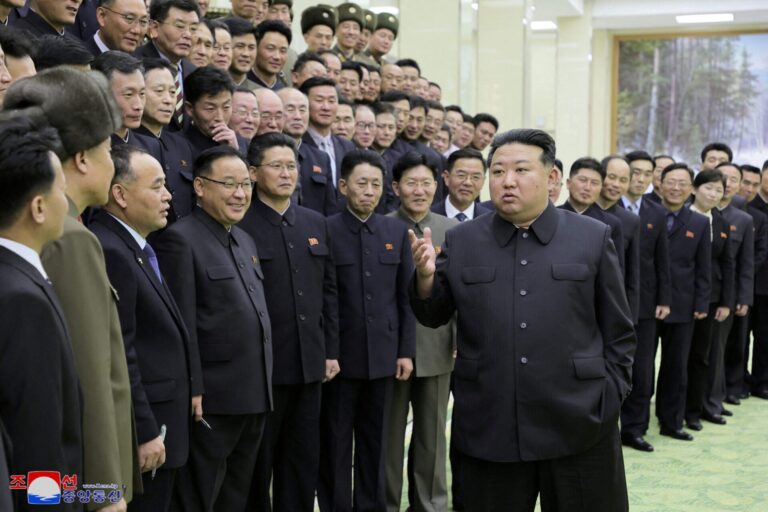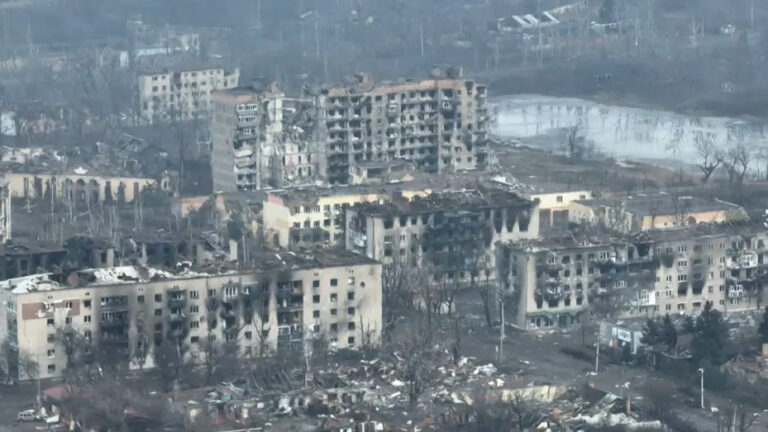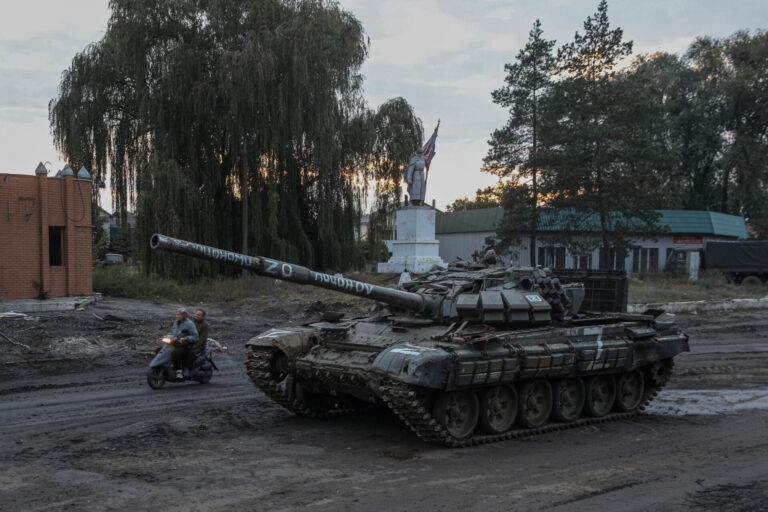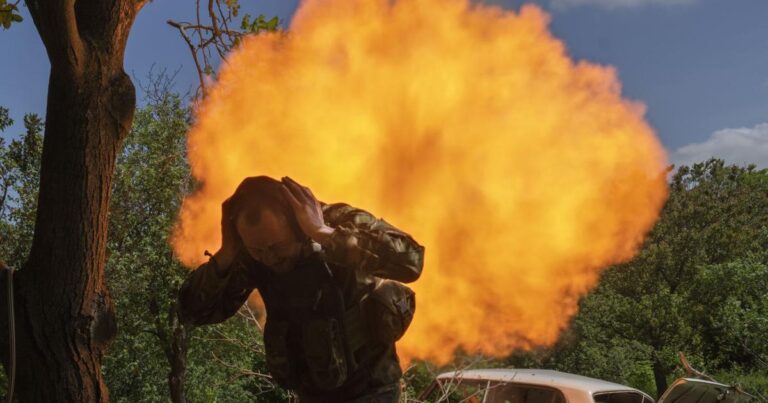Israel and Hamas agreed Monday to extend a temporary ceasefire under which dozens of Israeli hostages and Palestinian prisoners have been released from captivity.
The deal will continue the initial four-day humanitarian pause in fighting through this coming Thursday morning, with the potential for further extensions. The Qatar-mediated agreement is the longest break in hostilities since Hamas attacked Israel on October 7, killing over 1,200 people, and the Israel Defense Forces launched an air and ground assault that has devastated large parts of northern Gaza and killed more than 13,000 Palestinians, according to Gaza’s health ministry. The pause has allowed Palestinian civilians to safely access humanitarian goods like food, water, medical supplies, and other basic necessities amid the critical lack caused by the war.
Monday’s extension, then, is good news for anyone concerned about the humanitarian conditions and plight of prisoners and hostages. But the bigger questions about the war’s path and the future of Gaza remain as unclear as they were when this pause began.
One Israeli American citizen, a 4-year-old girl held hostage by Hamas in Gaza since October 7, was released into Israel Sunday as part of the 50 Israeli hostages released since Friday. In return, 150 Palestinian prisoners previously in Israeli jails — minors and women — have been released from detention back to their families. As Vox’s Abdallah Fayyad explained, Israel holds “thousands of Palestinians, including hundreds of children … on murky legal grounds.”
Hamas and Palestine Islamic Jihad are still holding well over 100 hostages in Gaza. Most are Israeli or dual citizens, but a number of other nationalities are included in that group, including laborers from countries like Thailand and the Philippines. More than a dozen of those foreigners were released over the weekend. Over the next two days, both sides will release more hostages and prisoners; while no announcements about the extension specified how many on either side, an Egyptian official indicated Monday that Hamas might release 20 hostages while Israel frees 60 prisoners.
At this pace of exchange, the ceasefire could continue for days, given the number of hostages still in Gaza. But there is no agreed-upon framework for a long-term deal, and Israeli Prime Minister Benjamin Netanyahu has insisted that the war will go on after the current ceasefire concludes. While the prisoner exchange could strengthen Hamas’s political position, further complicating Israel’s goal to eradicate the group, Israel appears undeterred.
The exchange and ceasefire agreements are complex and tenuous
For weeks, news outlets had been reporting about an impending ceasefire and prisoner exchange, but Qatari and US politicians began speaking openly about such a deal and their role in it only last week as an agreement finally appeared near. (Because Israel and Hamas don’t have direct diplomatic channels, Qatar and Egypt, which maintain communication channels with Hamas, were pivotal in securing the ceasefire and exchange.)
According to the Associated Press, discussions about a prisoner and hostage exchange emerged as soon as October 12, with the first proposal suggesting all women and children held in Gaza be released in exchange for freeing all Palestinian women held in Israeli prison. That proposal morphed into the current deal over weeks of negotiations brokered primarily by Qatar.
Israel’s parliament, the Knesset, voted in favor of the deal last Wednesday, with only the ultranationalist, far-right religious party of National Security Minister Itamar Ben Gvir voting against the proposal, according to the Times of Israel.
Though there will still be about 150 hostages in Gaza after this extension, that doesn’t mean Hamas can use them to prolong the ceasefire indefinitely; it can only continue another five days following the first extension. Hamas has also only agreed to release civilians; although the militant group that controls Gaza has taken some Israeli soldiers hostage, guaranteeing their release will require further negotiations, Raphael Cohen, director of the Rand Corporation’s Strategy and Doctrine Program, Rand Project Air Force, told Vox. “When the Israelis want to get the soldiers back, that will presumably be on different terms. It’s one thing if you’re trading Israeli civilians for a handful of, primarily, women and minors,” some of whom are alleged to have committed serious crimes, Cohen said. For Hamas to release the soldiers, they may ask for “people who Israel believes have actually committed murder and who are more senior Hamas operatives — that’s a very different political calculus.”
Though the ceasefire and prisoner exchange has gone through with minimal interruption, there was an hours-long delay in Saturday’s exchange when Hamas threatened to call off the deal, saying that Israel had not abided by its part of the agreement. However, the planned exchange went ahead, and as of Monday, all parties had agreed to a continuation of the pause.
Qatar has become a major player in global diplomacy and has been an important part of the current negotiations, in part because it’s one of two nations that maintains a direct relationship with Hamas. “It wants to be influential, diplomatically, and it does understand that, obviously, it’s not a regional superpower that can dictate things,” Bessma Momani, a political science professor at the University of Waterloo, told Vox’s Jen Kirby. That puts Qatar into a challenging balancing act:
Yet maintaining these delicate ties — and working those connections — is a very good way for Qatar to advance its interests, and its security. That approach comes with some risks, but, at least right now, they don’t outweigh the upsides for Qatar.
What happens next?
Hamas has, in the past, taken hostages as a negotiating tool to get Palestinian prisoners released from detention in Israel, and it has historically been effective — often asymmetrically so, as in the case of Gilad Shalit, an Israeli soldier who, after being held by Hamas for five years, was traded in 2011 for more than 1,000 Palestinian detainees.
The present exchange, though nowhere near that scale, still notches a political win for Hamas.
“It shows that not only is Hamas defying this notion that they’re going to be destroyed,” Khaled Elgindy, director of the Middle East Institute’s program on Palestine and Palestinian-Israeli affairs, told Vox. “Israel is still talking about eradicating Hamas, but they’re forcing Israel to negotiate with them and to release Palestinian prisoners, even in relatively small numbers.”
As Fayyad wrote, Israeli jails hold thousands of Palestinian prisoners, many of whom are held under administrative detention — meaning indefinitely and without being charged, for reasons as minor as a social media post or nonviolent protest — in the name of national security. Those who do get a trial are tried in military courts, where the conviction rate is around 99 percent:
Israel maintains that it detains people because of legitimate security concerns, such as potential participation in violent attacks. But while there is a thin veneer of due process … ‘Evidence has shown that [administrative detention] is a pretext to persecute and deprive people of their fundamental rights and freedoms because they challenge the Israeli military occupation,’ said [Elizabeth Rghebi, the Middle East and North Africa advocacy director at Amnesty International USA.]
Many Palestinians “have had loved ones who have been arrested, detained, tortured, [or had other] experiences in Israeli prisons,” Elgindy said. “The fact that Hamas can deliver that in the midst of the most ferocious bombing campaigns we have ever seen in the Gaza Strip is pretty remarkable.”
The ceasefire will also allow Hamas to rearm, to a degree, although substantial regrouping and rearmament would take longer than the brief period allowed under the ceasefire deal, Cohen said. Israel’s defense minister Yoav Gallant promised that the pause in hostilities would be just that, “then we will continue operating with full military power,” Reuters reported Friday.
“I can’t see the truce lasting more than a week,” Miri Eisin, managing director of the International Institute for Counter-Terrorism, told the Guardian. “The IDF wants to dismantle Hamas’s terror capability and military capability, and the only way to do that is through a systematic and careful ground operation.” However, the Biden administration signaled Monday that it hoped for a prolonged pause to release as many hostages as possible.
What Hamas is betting could change the dynamics of the conflict is that the longer the pause, the “more international pressure there will be to make this truce permanent,” Cohen told Vox. “I think it affects more the political calculus rather than the military calculus.”
The pause comes amid growing congressional calls for conditions on military aid to Israel, a concept President Joe Biden’s national security adviser Jake Sullivan didn’t explicitly dismiss during an interview on Sunday’s Meet the Press.
Despite that, there is no appetite within Israel to negotiate for a permanent ceasefire right now, Cohen said.
“At the end of the day, none of the structural dynamics here have actually changed — Hamas has been rooted out of more than half of the Gaza Strip, optimistically. It’s still in control of the southern half; many of the Hamas senior leaders … are still at large, which means that stopping now functionally just means that you’ve bought yourself a couple of years of peace, and you’re going to be in the same place again just in a matter of a couple of years.”
Source: Vox







